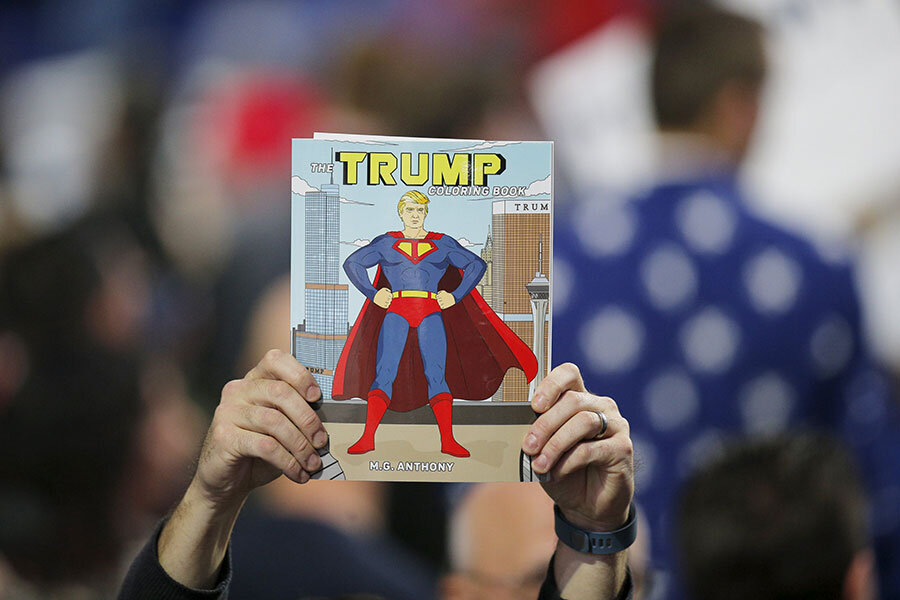The most unusual part of Donald Trump's new ad
Loading...
Donald Trump’s new political ad is getting a lot of attention. It’s his first video foray into the Iowa and New Hampshire TV markets, and it’s as belligerent as you might expect, jumping from shots of terrorism suspects and border-crossing migrants to video of United States warships firing cruise missiles, flashing police lights, and a thundering Mr. Trump promising – no surprise here – to “make America great again!”
It’s a thrill ride in 30 seconds. The Donald’s not into soft-focus bio spots with waving flags, rippling wheat, and puppies. He’s out to remind the citizens of early voting states of his core campaign promises, from the border wall (paid for by Mexico) to blocking Muslims at the border “until we can figure out what’s going on.”
“The point may simply be to remind them how different Trumpmania is from political business as usual,” opines Allahpundit at the right-leaning "Hot Air" blog.
In that context, what’s the ad’s most unusual (or inaccurate, if you’re a critic) aspect?
Most pundits might point to the faux fleeing Mexicans. When the ad promises that Trump will stop illegal immigration by building a wall on our southern border, it shows a scary action shot of small, dark figures scurrying across a sandy shallows from a low hill to a fenced area.
The problem here is that the video is not of the US border. It was taken in Melilla, an autonomous Spanish area inside the borders of Morocco.
At first Trump officials insisted they did this on purpose, to show what might happen if current trends persist. Later Trump’s lawyer said on CNN that using the clip was a “mistake” and he’d talk to the person who put the ad together.
But lots of campaigns make mistakes with stock footage. For our money the more problematic part of the Trump ad is something else: his continued insistence that somehow the US will “take” Middle Eastern petroleum reserves.
This comes in the brief part when the deep-voiced narrator says Trump will “cut the head off ISIS” and then “take their oil.” Sounds good, right? After all, ISIS is financing lots of activities via their control of Iraqi and Syrian oil fields. They’re stealing the oil themselves and selling it on a shadowy world gray market.
This is a variation of a policy Trump has long advocated. Back in 2011, his plan to lower gas prices, then over $4 a gallon, included simply seizing Iraq’s oil fields, so the US could get something for the expense of its invasion.
The problem here is that’s a lot harder than it sounds. As Brian Beutler notes at the New Republic, it’s not as if this oil is sitting around in giant stashes of barrels that the US can load onto C-5s and fly back to the homeland. It’s in the ground, in the form of vast liquid reserves. If the US is going to “take” it, US troops would have to guard the facilities for years, given that Iraqis, Kurds, Syrians, and other local countries and/or political factions consider oil their own.
“Short of occupying those countries indefinitely, and stealing the oil on behalf of American companies, in the face of global condemnation, this isn’t going to happen,” writes Mr. Beutler.
Of course, Trump and his voters would probably say that’s loser talk. And that sort of projection of strength may be a big part of his domestic political appeal.








